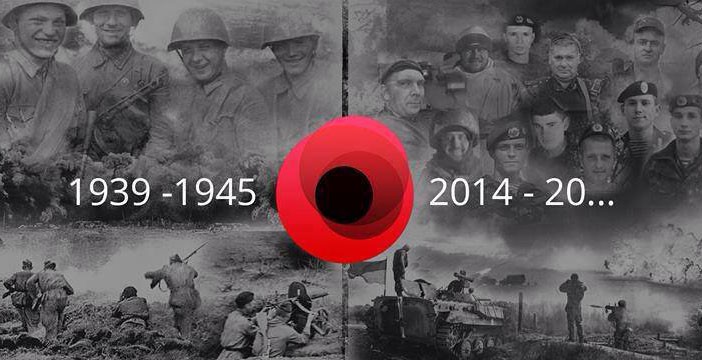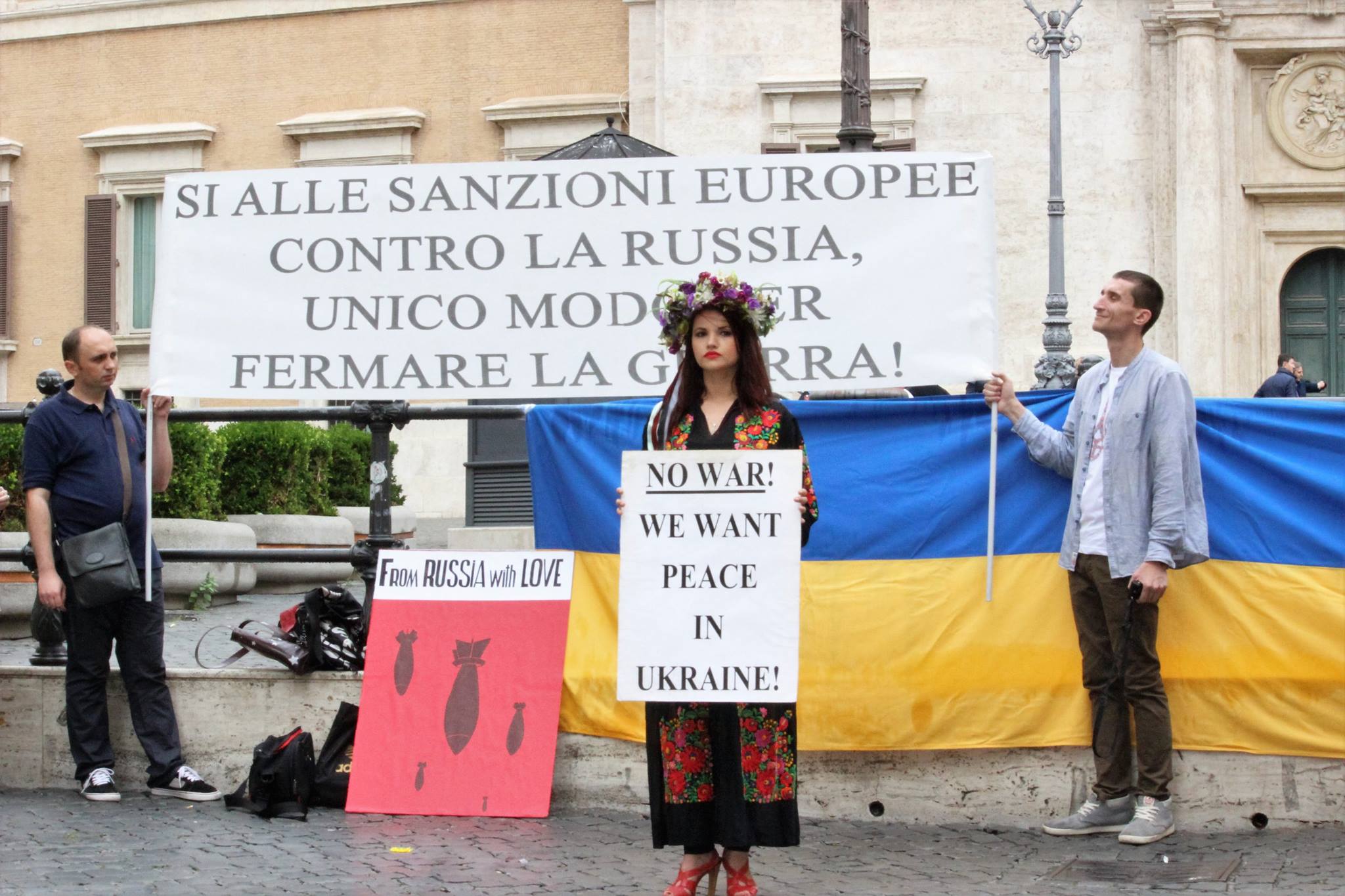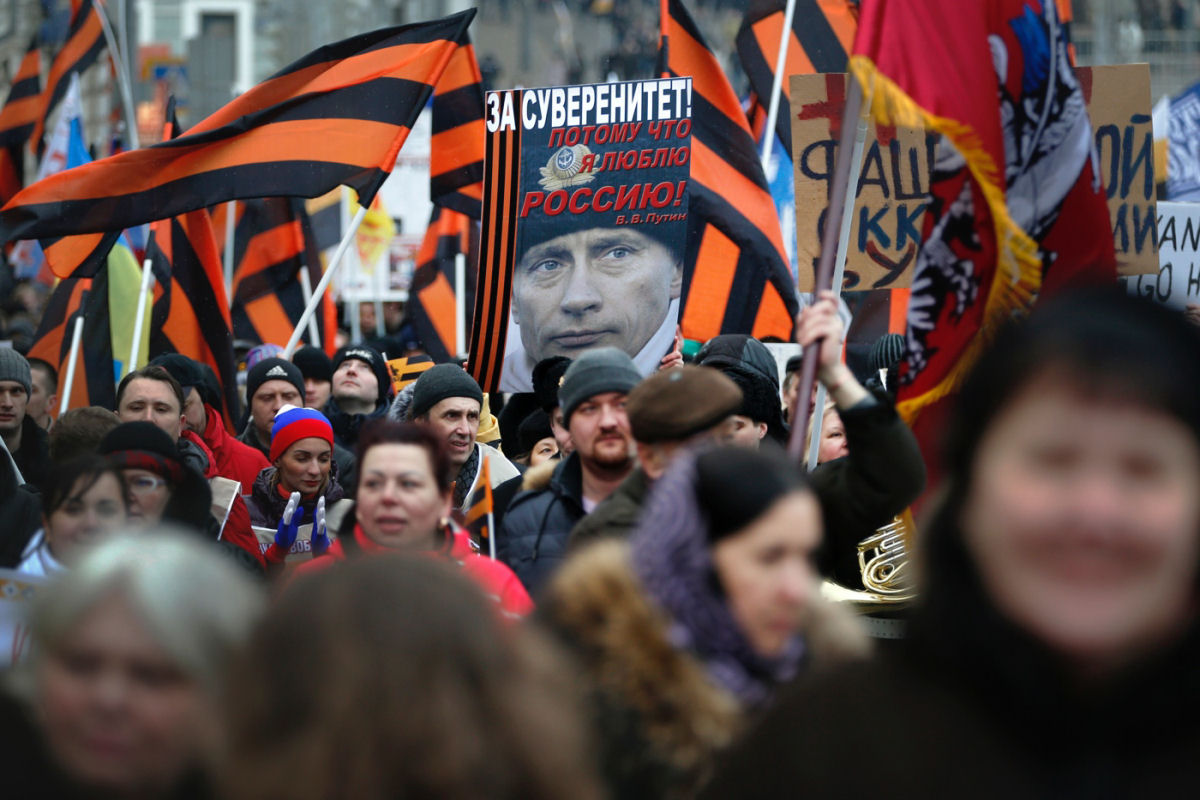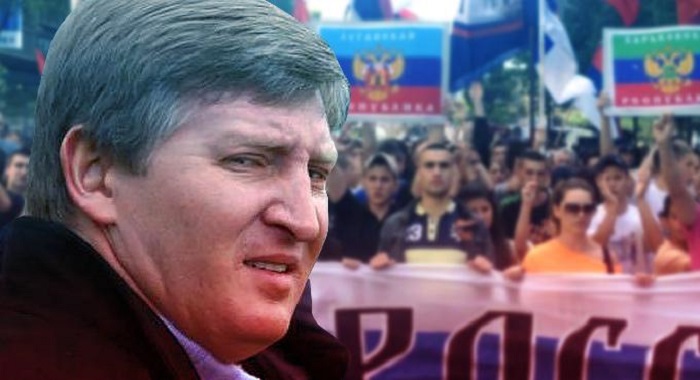On April 11 1935, a document titled "Valuable Declarations" was published in translated form for the eyes of the top brass of the Polish army. The author was Wsiewołod Zmijenko, a Ukrainian born Polish general who had served in Odesa during the Polish-Soviet war of 1920. His work was an attempt to see the Holodomor for what it was despite the fog of Soviet misinformation. "The Soviet government" he wrote "firmly denies the fact of the famine in Ukraine. This was the basis for turning down the [offer from] European organizations to bring in relief aid. The dissemination of information of the famine was dubbed as slandering [The USSR]. [...] The letters from the people condemned to death from starvation were of no help, nor the reports from the correspondents, nor the photos brought in from Ukraine with great difficulties and at great risk. Everything was denied; the material evidence was described as a plot by the bourgeois against the proletarian state. [...] So far the Ukrainian and foreign press were full of all types of information on the consequences of the famine in Ukraine. Numbers of 10,000,000, 6,000,000 & 2,000,000 victims were quoted, but the [Soviet] government refused to accept them. Today, it also does not accept it and probably will never admit it officially." [1]
It is an unfortunate fact that these words ring true even today. Under Putin, Russian historiography on the Holodomor has been contorted to fit glorified conceptions of the Soviet Union. In practice this means Holodomor denial is promoted from the very top of Russian academia. It is not just merely men such as Viktor Kondrashin whom I have dealt with and who simply cherrypicks what pleases him, but also men like Andrei Marchukov whose denialist trite is apparently enough to get him into the position of "staff researcher of the Russian Academy of Sciences' Institute of Russian History" in Russia today. [2]
History whether we like it or not is a weapon of propaganda and the West has practically left the Ukrainians alone to stand up to Putin's distorted history. With regards to the Holodomor, legislation in Ukraine has existed since 2006 that acknowledges the Holodomor as Genocide as well as making denial of it a criminal offence, much like denying the Holocaust is a criminal offense in Israel. Yet legislation of this spirit was sidelined under the rule of Yanukovych who sought to align Ukrainian historiography to match that of the Kremlin's. For this reason in post-Yanukovych Ukraine, a stronger dose of medicine than the one in 2006 was felt required for the nation to come out of its Soviet past. On April 9 this year, a bill was passed in the Verkhovna Rada that will open and declassify Ukraine’s KGB archives. There is no doubt that the impact that this is going to have on future books on the history of Ukraine will be profound.
The winds of change that helped lead to this bill could have been felt last year when the Red Poppy became the symbol of remembrance for those who died during WWII instead of the orange and black ribbons of the order of St George, and the day of remembrance marking the end of WWII extended from May 9 to May 8.
To a western reader unaccustomed to the history of WWII this might seem trivial but it is not. In May 1945 Germany signed two acts of Surrender. In the early hours of May 7, Alfred Jodl on behalf of the Nazi government signed an act of surrender to Eisenhower in his office in Reims, France. However because no Soviet personnel were present in the Surrender ceremony, Stalin demanded another one to be held in Berlin for May 8 where Wilhelm Keitel was ordered to sign a surrender document to Georgy Zhukov. By the time that surrender document had been signed, midnight had passed in Moscow and it was already May 9. The British Commonwealth still retains commemorating VE day on May 7, but most of Europe has it on May 8 and Russia on May 9. Under Soviet and now Putin's tutelage in Moscow, the latter date has became a regular exhibition of the USSR's role in "The Great Patriotic War" and an exaltation of Russian “patriotism” packaged in the so-called “Russian fight against fascism" between 1941-45. And the aforementioned ribbons of the order of St George are a part of that. They may have been banned by Lenin for their Tsarist connotations but were revived by Stalin during WWII. They have remained as a symbol of the war and russian nationalism ever since.
In Ukraine as part of its attempt to break away from its Soviet legacy, the term "The Great patriotic war" has been dropped in favour of commemorating WWII more fully. In the words of Volodymyr Viatrovych, director of the Ukrainian National Memory Institute, "For us the Second World War started September 1, 1939, and we do not have the right to narrow it to the Great Patriotic War, as it was much more horrible and tragic."
Russian historiography on the other hand remains mired in the blinkers of “The Great Patriotic War”. As a result the realities of the Nazi/Soviet alliance that existed between 1939 and 1941 has been whitewashed away from the Russian public consciousness. It should be telling that RT.com’s twitter account dedicated to WWII absolutely fails to mention what happened between what is in essence ⅓ of the duration of the conflict that we call WWII.
On August 23 1939, the German and Soviet foreign ministers Joachim von Ribbentrop and Vyacheslav Molotov signed a so-called “nonaggression pact” with a secret protocol agreeing to carve up Central & Eastern Europe into Nazi and Soviet imperialist "Spheres of influence." Yet according to Nazi and Soviet propaganda what followed next, was not acts of imperialism but rather “liberation” of allegedly oppressed peoples and “peacekeeping.” On the same day as the Molotov-Ribbentrop pact was signed. Nazi propaganda minister Joseph Goebbels released this cinema reel for domestic audiences hinting that Ethnic Germans in Poland were in need of protection from acts of alleged Polish barbarism.
[youtube https://www.youtube.com/watch?v=oNEQbdXzZrw]
On September 17 1939, the USSR would follow suit. As the Red Army was preparing to cross the Polish-Soviet border, Wacław Grzybowski, Polish ambassador to Moscow was handed a note stating that the Belarusian and Ukrainian populations of Poland were in need of liberation from a “Bankrupt” Polish government whom the note had blamed for starting the conflict in the 1st place. [3] On September 3 1939 Britain and France declared war on Germany in support of Poland yet would go on to fail their moral and legal commitments to Poland. Despite this, the official Soviet press indicted the British and the French as the real warmongers in 1939. On September 30 1939 an editorial in Pravda wrote that "There is no justification for a war between France and Britain on the one side and Germany on the other, a war which is quite meaningless. It is up to France and Britain to end a war which was begun against the will of their peoples.” On 1 October 1939 another editorial wrote that “the hostility which the imperialist war-mongers [meaning Britain and France] have fomented between the two greatest countries in Europe [meaning the USSR and Nazi Germany] is now at an end.” On 30 November 1939 Stalin gave an interview to Pravda in which he was quoted as saying “It was not Germany who attacked Britain and France, but Britain and France who attacked Germany.” [4] Do not expect to go to a public library in Russia and see such Pro-Nazi Germany articles as these produced between 1939-41. Since WWII they have been cut out to preserve the myth of the USSR being “Anti-fascist.”
As the note to Grzybowski suggests, Ukrainians were caught up in WWII from the very beginning. In this instance they were used as an excuse for the USSR’s invasion of Poland but the story of the Ukrainian people's role in WWII goes back before this. To understand why you need to understand that the lands that we call Ukraine today were more than just the Ukrainian SSR. Before 1939 portions of what we now call Ukraine were also under the administrations of Romania, Poland and Czechoslovakia.
At it’s height, Hitler’s invasion of the USSR managed to completely swallow the whole of Ukraine as well as Belarus, whereas only a portion of western Russia was conquered. For this reason, Belarusians and Ukrainians were far more proportionally affected by WWII than the Russian peoples were).
A taste of what was to come for the Ukrainian people in WWII came about through the dissolution of the latter state. On March 15 1939 Hitler invaded most of what remained of Czechoslovakia after the annexation of the Sudetenland in September of 1938, proclaiming the “protectorate of Bohemia and Moravia.” This action left its most eastern province, Carpatho-Ukraine, publicly on an uncertain knife-edge though in private Hitler allowed his ally Hungary to seize the province. On March 16, Avhustyn Voloshyn, a Bishop and politician declared that Carpatho-Ukraine was an independent state. However this “independence” was only to last a handful of hours before the Hungarians annexed Carpatho-Ukraine on March 17. But not without armed resistance. Hundreds of Carpatho-Ukrainians died fighting the Hungarians. More than 1000 Carpatho-Ukrainians escaped to Bratislava. They would later find themselves in German concentration camps. [5] Voloshyn escaped to Prague and survived until near the end of WWII, when he was arrested by the NKVD and shot in Moscow. [6]
Conventional WWII historiography has it that the Polish were the “first to fight” because in September 1939 it was the Polish state that was indeed engaged in its most dire struggle for its independence. As part of that struggle Poland raised Ukrainian soldiers. In the mid morning of 1 September 1939, advanced contingents of the 4th and 36th German Panzer brigades attempted to seize the Polish border towns of Wilkowiecko and Mokra, only to find themselves being repulsed back by men of the Wołyńska Cavalry Brigade. This proved to be one of the few successful defensive battles for the Poles and it was achieved because of the Ukrainian contingent to the Wołyńska Cavalry Brigade, such as men like Konstantin Kosyanchuk and Konstantin Benyuk who were both awarded the “Virtuti Militari” for their heroics on this day. In total, Hitler’s Wehrmacht would come to face over 100,000 Ukrainian soldiers during the invasion of Poland. With the new emphasis in Ukraine on covering the events of 1939-41, perhaps these men will finally get the attention they deserve. Here it’s also worth noting that according to Pavlo Shandruk (who also won a “Virtuti Militari” and whom I will discuss later) before the Soviet invasion of Poland; “The General Staff was aware of a possible Russian invasion and was planning to organize a defense of Galicia; for this purpose two Ukrainian brigades would be created under my command.” [7] However this proposal did not come to pass as it was too late to save Poland in 1939.
Ukrainians in the West
After the defeat of Poland in 1939, many Ukrainians who had served as part of the Polish Armed forces, following their Polish counterparts, fled to France through Romania and Hungary and then to Britain via Dunkirk. One of these men was Wladyslaw Chciuk. Born in Drohobych on June 6 1915. During the battle of Poland in 1939 he had made his name as a fighter pilot before joining the French as part of the “Montpellier Squadron” after his evacuation through Hungary and the Balkans. After his fighting in France had finished he went to Britain and joined the Polish Air force under RAF command as part of the 308 “Krakow” Squadron. He was not alone. Another Ukrainian who undertook a similar journey was Michael Oparenko. Born in Kyiv in 1915, after the fall of France he was evacuated to Britain and joined the 307 “Lvov” Squadron. [8]
In total, almost 17,00 men served as part of the Polish Air force in Britain. Of these, the list of Ukrainians or persons born in Ukraine is quite extensive. The Ukrainian contribution to the British war effort has almost been forgotten in Britain, in part because these Ukrainians were simply counted as Poles at the time and today the Polish efforts have also been nearly forgotten. Because by War’s end an Anti-Polish feeling had developed. In a parliamentary debate on March 20 1946 Ernest Bevan told the house of commons "I have never disguised our firm conviction that, in our view, they ought to go back in order to play their part in the reconstruction of their stricken country." Except there was no country for go back to. Poles and Ukrainians that relocated back to the USSR were routinely condemned as “fascists” and promptly deported to Gulags. The pro-soviet British left echoed these sentiments and helped ensure that those who had heroically fought for Britain were made not to feel welcome. In addition the British government promoted denial of the realities of the Katyń massacre as well as excluding Poles (and Ukrainians that fought with them) from marching in the June 8 1946 victory parade in London to celebrate the defeat of the Nazis, on the basis of not offending Stalin. Yet despite British hostility, many Poles and Ukrainians stayed. Oparenko for example who became a founding father of the “Association of Ukrainians in Great Britain.”
On July 30 1941, in light of the changing political climate in the wake of Hitler’s invasion of the USSR, Władysław Sikorski, head of the Polish government in exile signed an agreement with the Soviets which entailed the creation of a Polish army on Soviet controlled soil under the command of the Polish government in exile. On August 12 Stalin signed a so-called “amnesty” for those in the USSR who could prove that they were indeed citizens of the former Polish state. Before 1941 Stalin had deported 1.5 million Polish citizens, most of which ended up as prisoners in Siberia and Kazakhstan. The “amnesty” offered a chance for escape, however for minorities of Poland such as the Ukrainians and Belarusians that the USSR claimed to “liberate” in 1939 there were obstacles to overcome on the presumption of Stalin that both groups were Soviet citizens, not Polish. [9] Despite this, many Belarusians and Ukrainians slipped through and joined the new Polish Army headed by Władysław Anders. In 1942 Stalin, increasingly becoming discontented with the Poles in the USSR, allowed the evacuation of the Polish army to the middle east. They would spend the rest of the war fighting alongside with the western allies. The II Korpus Polski formed out of these evacuees would go on to earn distinction for its role in such battles as the Siege of Tobruk during the North Africa Campaign and Monte-Cassino during the Italian campaign, and it had a clear Ukrainian backbone. According to Yury Shapoval, ⅛ of all the men who served under Anders were Ukrainian.
On July 22 1944 a young Ukrainian by the name of Vasily Porika met his death on the fields of Arras. In 1942 he had been captured fighting on the eastern front by the Germans and interned as a POW in Beaumont in northern France. Here he spent his time actively building links with the French resistance before making his escape in July 1943. After a recapture and imprisonment in Saint-Nicaise he managed a 2nd escape and by April 1944 he became an active leader in the resistance with the alias “Lieutenant thunder” until his death barely 3 months later. For his actions, Porika has been posthumously awarded the title “Hero of the Soviet Union.” [10] By no means was he the only Ukrainian to fight with the French resistance. Under very different circumstances on August 27 1944, a pair of Ukrainian battalions raised by the Germans in Galicia and who were meant to fight French partisans on behalf of the Germans defected to the French resistance. [11] After the war most of these Ukrainians would not repatriated back to the USSR on the basis that Stalin would persecute them for their collaboration with the Germans. Many would go on serve on as part of the French foreign legion. Since WWII debates have raged over if recruitment to the FFL during the 1940s allowed war criminals to avoid prosecution. One thing that is not in doubt is the Jewish contingent to the FFL who in WWII helped fight against the Germans. One of the most notorious Ukrainian Jews to serve in the FFL was Sholom Schwartzbard who is most known for his assassination of Symon Petlura.
Every year in the small French village of Les Martres-de-Veyre there is a ceremony to honour the memory of Peter Dymtruk or “Pierre le Canadien” as he is locally known. A Ukrainian born in canada who had served in the Royal Canadian Air Force before joining the French resistance. On December 9 1943 he was shot by the Germans for sabotage activities but such was his notoriety for being both a foreigner and an active participant in the resistance that the Germans deemed that his execution alone was enough to break the spirit of the local resistance. Without that fame it is perhaps likely that the whole village of Les Martres-de-Veyre where he was found would have been massacred along with him. He has been posthumously awarded the “Croix de guerre.”
There are plenty of stories about Ukrainians who fought in the west, each with their own context and setting as there are plenty of stories about Ukrainians in the Red Army or Ukrainians at home. And if you include the Ukrainian diaspora on the other side of the Atlantic than the subject becomes a very broad one indeed. One additional member of the Ukrainian diaspora who has received increased attention is Nicholas Oresko for his actions in the US army against the Germans. Not all Ukrainians belong with the same brush (and especially not the overly crude ones coming from out of the Kremlin) and in the next few posts I am going to help show that by sharing some of the stories of the Ukrainian people in WWII.
[hr][1] W Zmijenko, "Valuable declarations." Cited in J Bednarek et al., “Poland and Ukraine in the 1930’s – 1940’s, Unknown Documents from the Archives of the Secret Services. Holodomor The Great Famine in Ukraine. 1932–1933,” No 216, p576-79.
[2] On A Marchukov and his Holodomor denialism. See my comments here.
http://www.twitlonger.com/show/n_1sl8e54
[3] Republic of Poland: Ministry of foreign affairs. “Official documents concerning Polish-German and Polish-Soviet relations, 1933-1939.” No 179, p191-2.
[4] These Pravda articles are quoted here.
[5] N Davies, “Vanished Kingdoms: The history of half-Forgotten Europe”, p631.
[6] N Davies, “Ibid”, p631.
[7] P Shandruk, “Arms of Valor”, ch19. Accessed here
[8] A brief extended biography of Chciuk can be found here and Oparenko here
[9] For details, see Y Gutman, “Jews in General Anders’ Army In the Soviet Union”, at Yad Veshem.
[10] A biography of Porika can be found here
[11] For additional details, see R Soribey, “Ukrainians fight for France”





